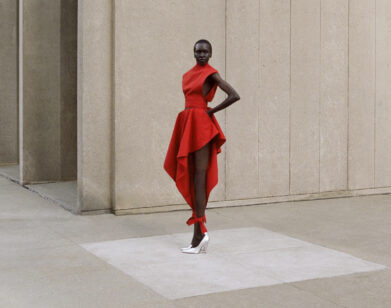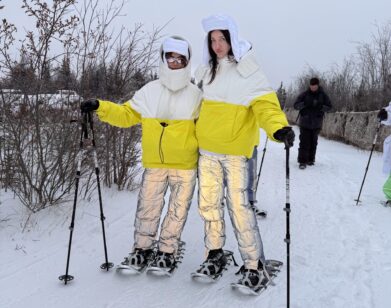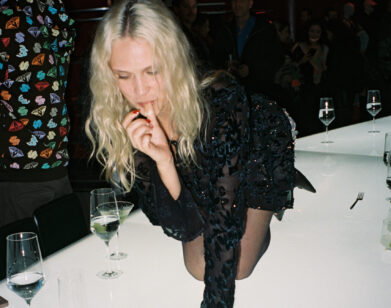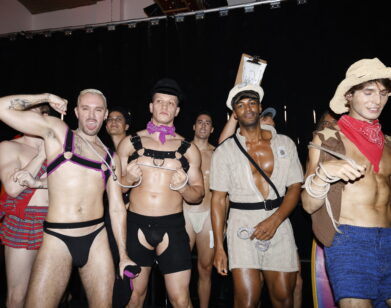Simplici-T
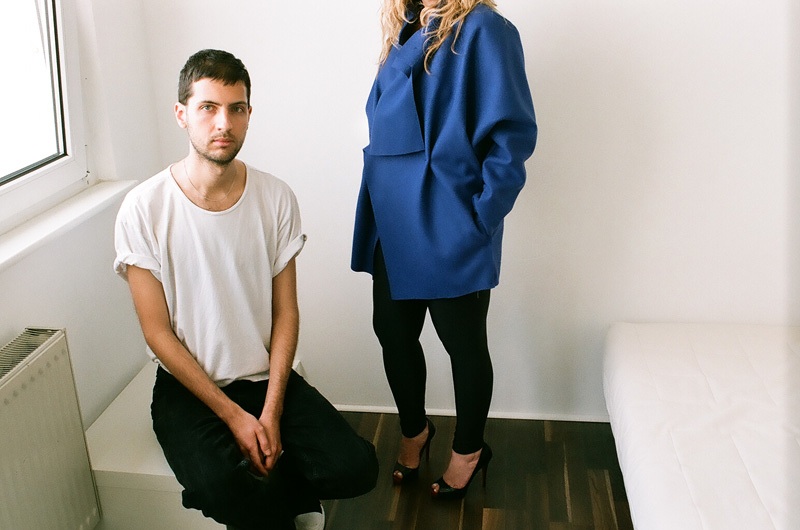
Photo by Maxime Ballesteros
Pithy slogan-ed T-shirts heavy with rhinestones, sparkles, and blinding neons catapulted Henry Holland into London’s fashion limelight. But it’s 210 individual unadorned grey T’s that have made Vladimir Karaleev a critical favorite in the Berlin fashion scene, where his work is exclusively available at Berlin’s prestigious Apartment showroom alongside like-minded designers like Raf Simons and Rick Owens.
For his Spring/Summer 2007 collection, the Bulgarian-born, Berlin-based designer produced an entire collection according to strict dogma. Karaleev hand-made the entire line using only thread to handstitch existing T-shirts in their entirety, eliminating and adding nothing. Each look was the product of instinct and drapery. The collection began with one plain, solid T-shirt. The second look in the line was a combination of two T-shirts. And the number of shirts included in the fabrication of each piece rose according to the garment’s number in the series—the show culminated with a gown made of 20 interlocking T-shirts with pieces of fabric stitched, braided and tied together. Other looks included dresses, coats, capes and gowns for both men and women, elevating a bland clothing staple into a series of unique, innovative garments that retain the constituent garments’ ease, wearability, and casual cool.
“Untitled Structures,” Karaleev’s Spring/Summer 2010 collection, is liberated from the self-imposed design constraints. Instead, he has presented white skirts made of architectural paper; soft white flowing silk tops; and thick wool jackets with sharp folds in which silk is matched with royal blue vinyl details. The clothes’ sculptural complexity still belies Karaleev’s interest in conceptual fashion, but Karaleev has come to accept happenstance as part of his process. In fact, some of the most alluring aspects of his work derive from apparent setbacks.
“I am color-blind,” Karaleev explains when I ask why he has limited his palette mostly to white, black and a rich Yves Klein-like blue. “I couldn’t pass my driver’s license. It’s not as if I only see in black and white. But I can’t see purple, for example. I can see blue though.” Happily, the blue he uses is reward enough itself. “Regardless of why it is, I think that it is always nicer to have one strong colour, preferably with meaning, and then you can concentrate totally on the structure.”
The mixture of intentional and accidental artistic elements of Karaleev’s designs has attracted the admiration of the Japanese fashion devotees and Berlin’s art community such as critic and gallery director Carson Chan and Anna Erikson, the Associate Director of Yvon Lambert New York, who poses here with Karaleev for portraits by Maxime Ballesteros. Karaleev, who has the gentle grace and soulful mien of a greyhound, fits in perfectly with Berlin’s intellectual art community. He will present his collection during Mercedes-Benz’s Berlin Fashion Week at the Coma gallery, alongside “Back to the Future,” a group show curated by Chan.
Karaleev believes that “Back to the Future” is a phrase that fits nicely with his work. “In Japan, people often ask me why I leave the seams unfinished,” he explains. “There are often threads and frayed pieces that remain unattached. I never thought about too much, but then it started to interest me. And I realized why I prefer it this way. When you leave something unfinished, then it never ends.”


